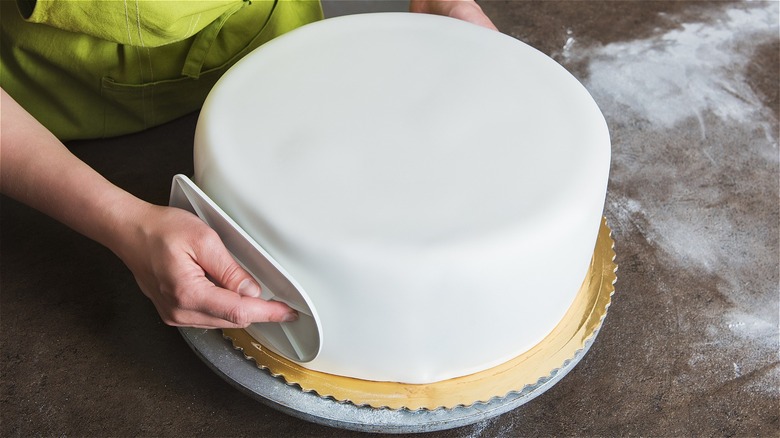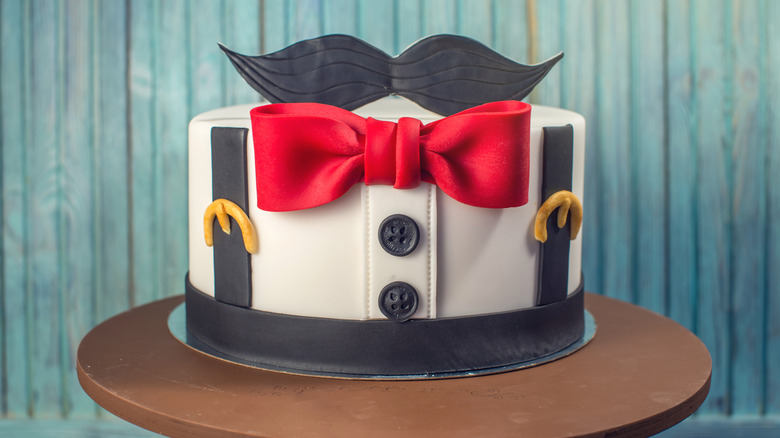The Roots Of Fondant Cake Decorating Is At Least 500 Years Old
When it comes to decorated cakes, fondant doesn't have a reputation for being the tastiest topping on the block. Unless you follow a specific fondant recipe to create something a bit more flavorful in lieu of buying a premade batch, chances are your palate will be insulted and you might feel like you're chowing down on modeling clay.
So, if it's that bad, why do so many cakes end up with this type of rolled paste décor covering them? In many instances, it's the most versatile choice for creating a smooth base to top with other more elaborate and creative decorations. You can easily cut shapes out of fondant, and it can be rolled into complex designs and figures. If you've ever watched an episode of the gameshow "Is It Cake?" on Netflix, you already get the picture.
Fondant also acts as a preservative since it covers the entire cake and is sealed along the edges, as noted by Bob's Red Mill. For this reason, cakes can be made ahead of time and still stay fresh for several days. This could very well be the reason that it was first used by bakers centuries ago.
Fondant's evolution beginning in the 16th century
Used by the elite who could afford sugar, both rolled fondant and poured fondant are centuries-old delicacies. The rolled variety reportedly originated in the 1500s and originally used sugar, rose water, egg white, lemon juice, and gum tragacanth in the recipe. Poured fondant — the kind used to decorate fancy tea cakes — came about in the 1800s, according to The International Sugar Art Collection by Nicholas Lodge.
What we call rolled fondant now was first used in Australia in the 1950s. It took the place of royal icing, which is much harder and more popular for cookie decorating these days. Rolled fondant didn't become widely used in the United States until the 1980s, however. Since then, it has been employed for a multitude of creative cake designs by both professional bakers and folks rolling fondant in their kitchens at home.
The pliable nature of rolled fondant makes it great for simulating ribbons or bows, swathes of fabric, flowers, and a variety of inanimate objects. It can also be dyed most any color. And, since most fondant is draped over a layer of other frosting like buttercream, you can peel it away and still enjoy the yummy cake underneath even if you're not a big fan of eating this versatile cake decorating ingredient.

